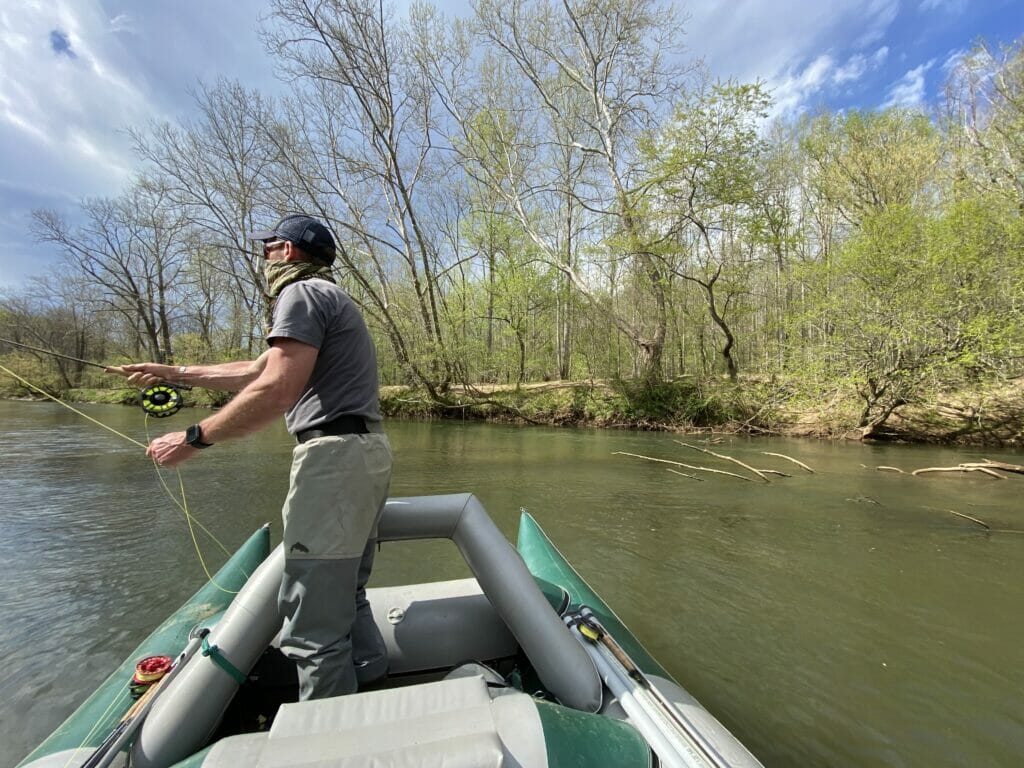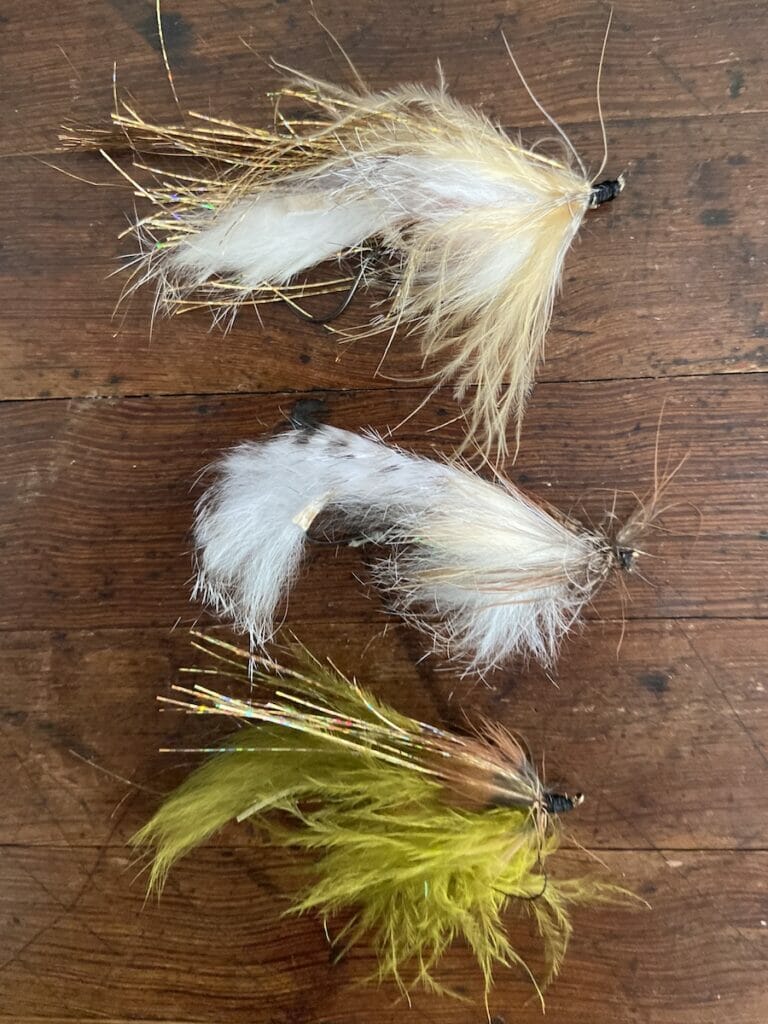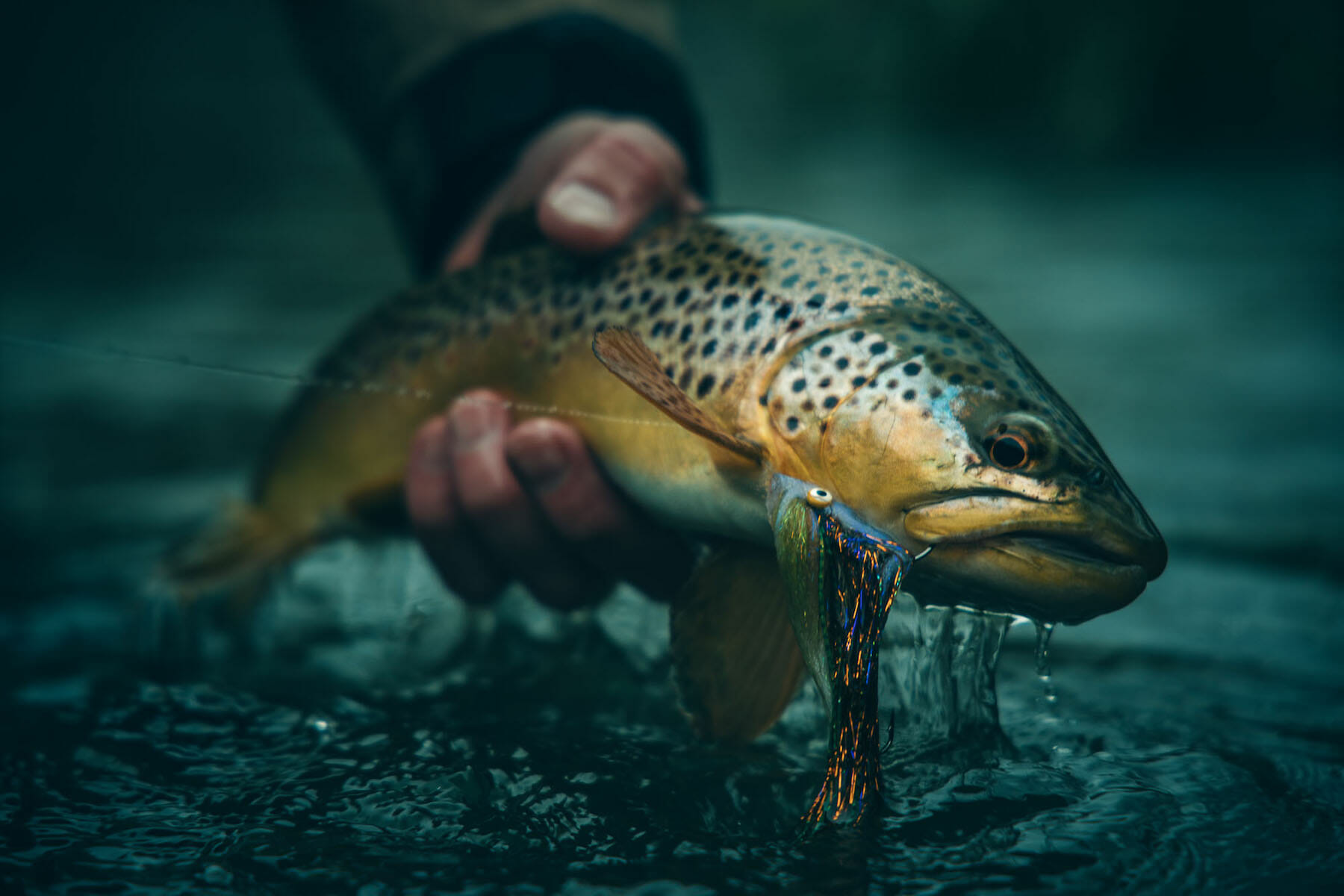A few days ago a friend was telling me about a fishing trip when he used a familiar phrase.
“We moved quite a few fish,” he said of the float trip on a Pennsylvania stream known for its big brown trout. That sentence, one I’ve uttered plenty myself over the years, is basically a euphemism for, “We didn’t catch many.”
Which leads us to the real question: What can we do to make more of those movers into eaters?
In this context, I’m talking about streamer fishing.
When nymphing, we often don’t see fish react to our presentations. When dry fly fishing we often see refusals but usually have a pretty good idea why the fish refused — drag, a visible tippet or a fly that isn’t an ideal match for the bugs the trout are keying on. With streamers it might not be as simple. Much of the time we’re not trying to fool fish that are actively feeding. We’re simply trying to elicit reaction strikes from predators that are lying in wait for something tasty to happen along.
Let’s assume that we start our day with the basic streamer-from-a-boat presentation. As we make our way down the river at the speed of the current (or slightly slower) we cast more or less perpendicular to the bank, getting as close as possible, and then strip our fly back to the boat, or at least part way back to the boat.
We’ve all had days when that’s all it takes. But when that presentation results in more movers than eaters it’s time to shift things up.
It can be tempting to slow the stripping speed. After all, the fish are interested but maybe need just a bit more time, right? Instead, I almost always go the other way.
Remember, these are reaction strikes. If the fly is moving slow, the fish knows (at least instinctually) that it has a little extra time before it has to commit to eating. The more time that elapses, the more time there is for something to turn the fish off.
Now, stripping more violently (and you can even get the rod involved), doesn’t mean you also have to shorten the pauses between strips. In fact, sometimes it pays to increase the length of those pauses.

This seems counter-intuitive, right? If fish want a faster, more violent strip, won’t they bolt when the streamer stops and just floats there? In short, no. I am amazed at the number of times I’ve watched a trout excitedly circle a dead-drifting streamer several times before finally eating.
The key is just try all kinds of combinations until you find something that is working at least relatively consistently.
Much of the time we’re not trying to fool fish that are actively feeding. We’re simply trying to elicit reaction strikes from predators that are lying in wait for something tasty to happen along.
The other thing we have to talk about is fly selection. In late winter and early spring, my favorite season for chasing big browns, I usually adhere to the “bigger is better” approach.
That said, though, I know plenty of folks who chuck 7- and 8-inch streamers, my “bigger” range usually tops out about 5 inches. That’s plenty big to get attention and allows me to not have to go beyond a 6-weight. My gimpy shoulder and elbow appreciate that.
If a big fly is getting looks but not eats, after trying variations of retrieves, I’ll size down but won’t go any smaller than 3 inches.
I don’t think color makes a huge difference when trying to draw reaction strikes, other than following the age-old rule of using darker colors on cloudy days and in murky water, and lighter colors on bright days and clear water.

Obviously, if you know that a certain forage is important in that particular river, do your best to mimic those colors. In rivers that hold big wild trout, I know there is one kind of forage that will always be there — little trout. So, if I had to pick only one color scheme and stick with it, it would be something that resembles a little brown trout.
I have one final tip if you’re getting follows but no bites despite tweaking of retrieves or flies: Move farther away from the bank. Think about it. If you’re seeing the fish chase your flies, they can probably see you looming up there above the water.
Adding 10 or 15 feet to your cast will probably reduce the number of fish you see actually moving on your fly but often will result in more eats — which is what we’re really after anyway.
We post Trout Talk features every weekday. See them all here.



